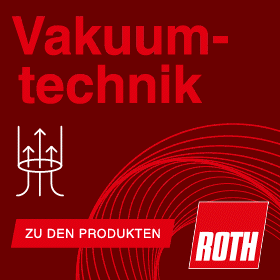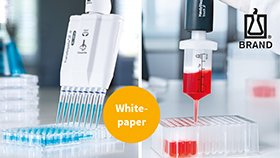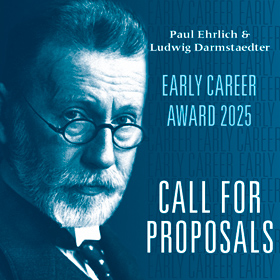Science and Society in Horizon 2020 and Beyond
Career strategies for young European scientists
by Ralf Schreck, Labtimes 01/2015
Page 1 | Page 2 | Page 3
Setting the landmarks for open access
As an immediate outcome, the prospect of savings in R&D expenditure and an increased return on public R&D investments, but also the acceleration of the research and discovery process with a shortened time from the innovation to the market, was highlighted. Alongside the EU flagship initiatives Digital Agenda for Europe and Innovation Union, a couple of major policy documents that paved the way for open access in Horizon 2020 were published in 2012. A communication entitled “Towards better access to scientific information – boosting the benefits of public investments in research” set three major targets: to establish national policies for open access in all EU Member States by 2014; to increase the share of publicly-funded scientific articles under open access at EU-level from 20% to 60% by 2016; and to make all scientific publications resulting from Horizon 2020 available under open access.
In “On access to and preservation of scientific information”, EU Member States were informed about the cornerstones of the national implementation of open access. In the meantime, so-called National Points of Reference for open access have been established in almost every EU country with the task of coordinating efforts at a national level. It was further stressed that open access is not the sole responsibility of the scientist himself but that other actors, including research institutions and funding agencies have responsibilities, too. These include, for example, the definition of institutional policies and the provision of funding for the dissemination of scientific information, including E-infrastructure (e.g. hardware, software and skilled personnel to run the infrastructure) in order to secure long-term preservation and re-use.
Open access in Horizon 2020 has a legal basis in the Framework Programme itself and its Rules of Participation. Specific requirements for the dissemination of results and open access are laid down in Article 29 of the Model Grant Agreement, which has to be signed after positive evaluation of the research proposal in order to receive EU funds.
Basics of open access in Horizon 2020
According to the current Guidelines on Open Access to Scientific Publications and Research Data in Horizon 2020, the most relevant scientific information are peer-reviewed scientific research articles in academic journals as well as research data given as data underlying publications, curated data or raw data. In addition, making open access available to other publications such as monographs, books and conference proceedings is encouraged.
Research data can be defined as particular facts or numbers, which are collected to be examined and considered as a basis for reasoning, discussion or calculation and are available in digital form, including experimental results, measurements, statistics, observations resulting from fieldwork, survey results, interview recordings or images. However, no legally binding definition of open access is given. Open access to scientific publications is understood to include the right to read, download and print as well as to copy, distribute, search, link and mine, whereas open access to data means that they can be accessed, exploited, mined, reproduced and disseminated.
Open access in Horizon 2020 is by no means at odds with securing intellectual property rights or the commercial exploitation of results, nor an obligation to publish. The scientist receiving financial support for a project in Horizon 2020, also called the beneficiary in FP language, still decides whether all or part of his research results are secured, exploited or disseminated. However, open access becomes mandatory as soon as he chooses to publish results originating from a Horizon 2020-funded project.
Open access includes two steps: depositing a publication in a repository for scientific publications and providing open access not only to the publication itself but also to its bibliographic metadata. The metadata in the repository identify the deposited publication and should include a persistent identifier, such as a DOI (Digital Object Identifier), the publication date, data referring to the original funding announcement (name of action), the project acronym and the grant number as well as the terms “EU” and “Horizon 2020”. In addition, authors funded by a Horizon 2020 project, should aim to deposit research data needed to validate the results at the same time.
Pick your colour: OA in practice
Depositing a publication and granting open access to it may take place simultaneously or not, depending on the publishing model. There are two major routes: archiving by the author himself or his representative (green open access) or open access publishing by the publisher (gold open access). Green open access means that the author publishes his article as usual, for example, in a subscription-based journal, and deposits either a machine-readable electronic form as, for example, a PDF file of the published article or the final peer-reviewed manuscript as soon as possible, or, at the latest, on publication in an online database or repository. Repository software might allow the author to delay access to the article. This embargo period must be within a maximum of six months in STEM disciplines (science, technology, engineering, mathematics), in case of publications in the social sciences and humanities within a maximum of twelve months. The embargo may also be imposed by the publisher, whose policies make provisions for an embargo period during which he is able make some money, for example, via pay-per-view or by granting institutions the right to use it for educational purposes.
Gold open access involves the publication of the article in an open access journal, upon which it becomes immediately accessible. In addition, there are also hybrid journals that are subscription-based with a paid open access option. In this case, your institution will have to pay the subscription, while the EC, your institution or you have to take care of the fees for open access.
Nevertheless, in all three scenarios the article has to be archived in a repository to ensure long-term preservation. The costs of publishing in open access journals, referred to as article processing charges (APC) or a publishing fee, are eligible for reimbursement during the duration of a Horizon 2020 project, and should be estimated and requested in your funding application as part of the dissemination budget. A price cap on fees for publication costs is currently not imposed by the EC. Björk and Solomon published a study last year on APC and found that the average costs of publishing are about €1,020 for established open access journals and €1,980 for hybrid journals. However, the actual costs for a given journal may be much higher. Since many publications appear after the funding period of a project, a mechanism for dealing with golden access publication charges after grant expiration will be sought in the frame of a pilot project as part of the European Research Infrastructures Work Programme, under the topic e-Infrastructure for open access.
Data are next: open access pilot
Making research data available and ready for re-use is currently being tested and implemented by a limited two-year Open Research Data Pilot in Horizon 2020. The pilot focusses on the “underlying data” needed to validate the results of publications and their associated metadata as well as additional data and their associated metadata, which are specified by the scientist in the data management plan (DMP) of the EU-funded project. A template for the DMP is provided, for example, in Annex 1 of the Guidelines on Data Management in Horizon 2020. Beneficiaries have to deposit the digital data of their project in a research data repository of their choice and take measures that will allow the data to be accessed, exploited, mined, reproduced and disseminated free of charge. Moreover, details on instruments and tools, which are necessary for validating the results presented in publications and, where possible, the tools themselves, have to be placed at the disposal of the beneficiary. Seven areas, accounting for about a fifth of the whole budget for Horizon 2020 in this period, are participating in the pilot and include projects in the Industrial Leadership (ICT only) programme and Future and Emerging Technologies, three subprogrammes of the society challenges funding pillar and SWAFS actions. Additional areas are able to take part on a voluntary basis.
|
Krishnaraj Rajalingam, Heisenberg Professor, Molecular Signalling Unit, Research Center for Immunotherapy, University of Mainz, Germany: “Science has to be open and transparent. For scientists in my field the main obstacle for not publishing their best work in an open access journal is our current evaluation system, which unfortunately still heavily relies on numerical indexes like the journal impact factor. Without any changes, scientists will be hesitant to publish their scholarship in open access journals. Further, young investigators need additional support from the granting agencies to cover the costs incurred for open access publishing.”
|
Opting in – opting out
Projects in the seven areas of the pilot may opt out in part or full at any stage of the project. The justification for opting out has to be included in the original or updated DMP. An initial indication of whether a project plans to opt out or not has to be given in the proposal at the submission stage, but has no impact on the evaluation of the project. A project may opt out, for example, if there are conflicts with obligations regarding commercial exploitation or personal data protection, as well as if confidentiality or security issues exist. Moreover, a project may opt out if it does not collect or generate any data or if its main aim is compromised by making specific data publicly available.
The DMP of a project is not part of the funding proposal but has to be developed during the first six months of a project and updated if necessary. However, all project proposals, both research and innovation action and innovation action, have a section on data management, which is subjected to evaluation under the impact criterion. It should provide details on the nature, scale and origin of data to be collected or generated, on the data standards to be used and the way metadata are produced, on the type of data that will be either exploited or made accessible and how this will be implemented, on how the data are processed and preserved for long-term usage, storage and back-up, and how associated costs will be covered after the expiry of the project. The exploitation and dissemination of results, including efforts to ensure open access, will be monitored once the project is funded by periodic and final reports. As outlined in article 43 of the Model Grant Agreement, failure to comply with Horizon 2020 policies (involving measures for dissemination and exploitation of results) may result in the reduction of the grant.
For funded projects taking part in the pilot, any costs relating to the implementation of the pilot will be reimbursed and additional technical and professional support services will be provided. One would expect the majority of projects to opt out but a preliminary analysis of roughly 3,000 project proposals from Horizon 2020’s first calls revealed that opt-out rates are below 30% in the seven areas of the pilot with a range for individual areas from nine to 29%. In other areas, about 27% of projects opted in on a voluntary basis with an area-specific range of nine to 50%.
Page 1 | Page 2 | Page 3
Last Changed: 14.02.2015








